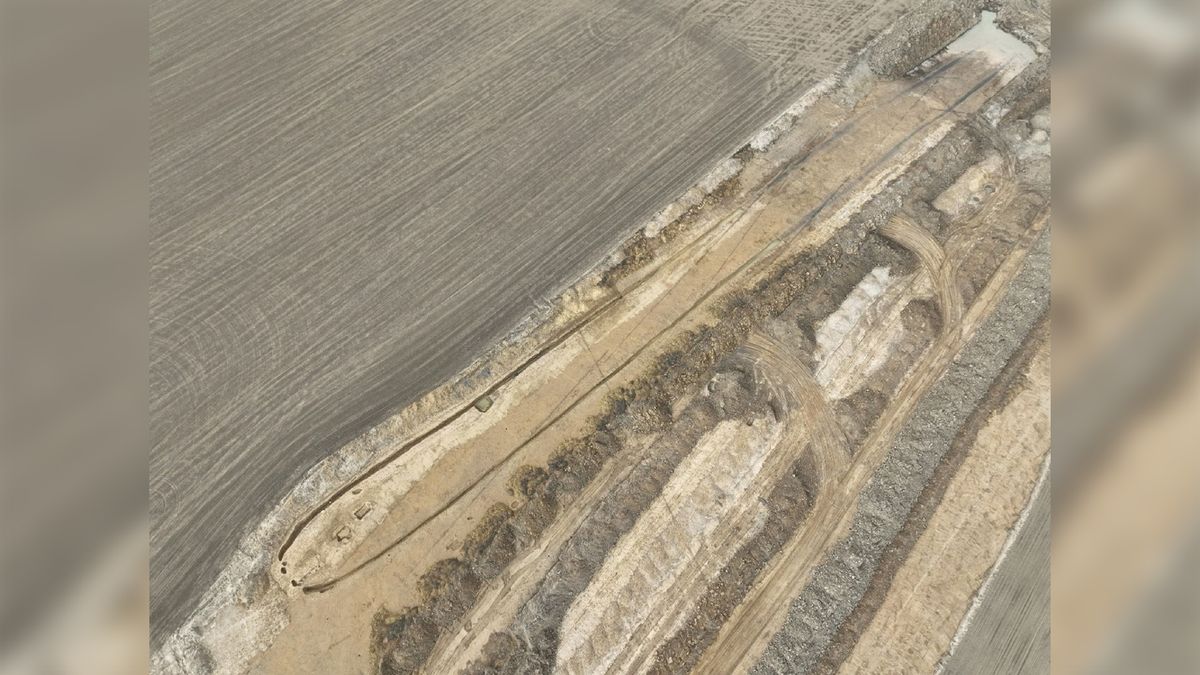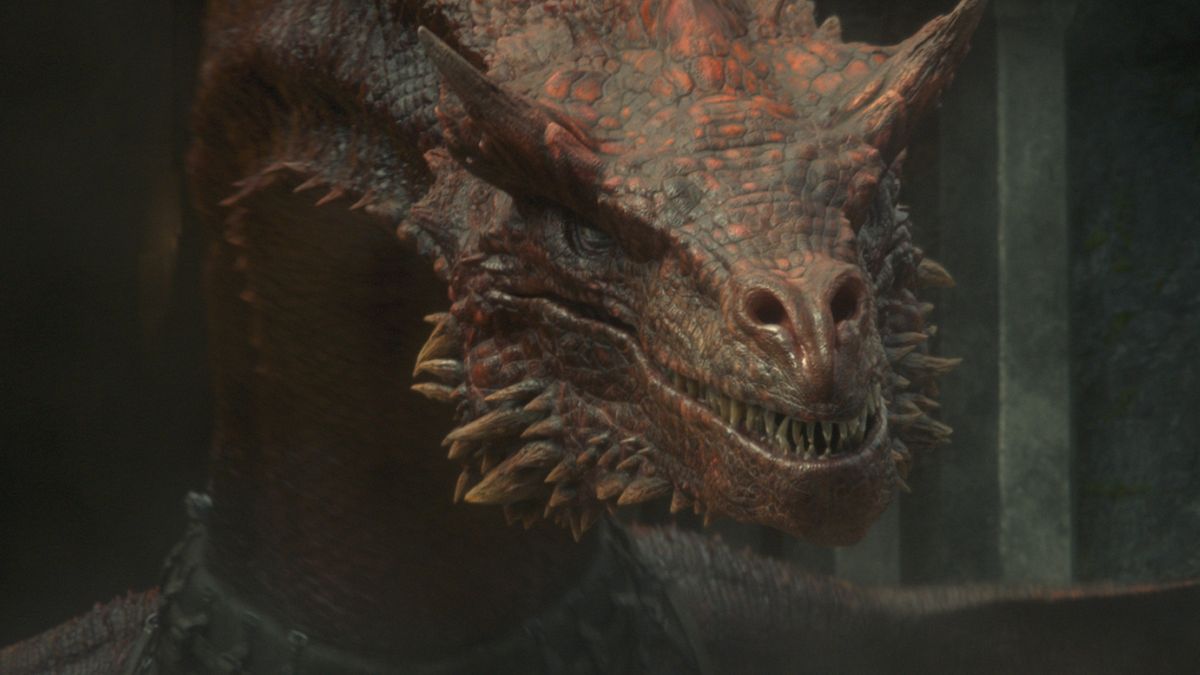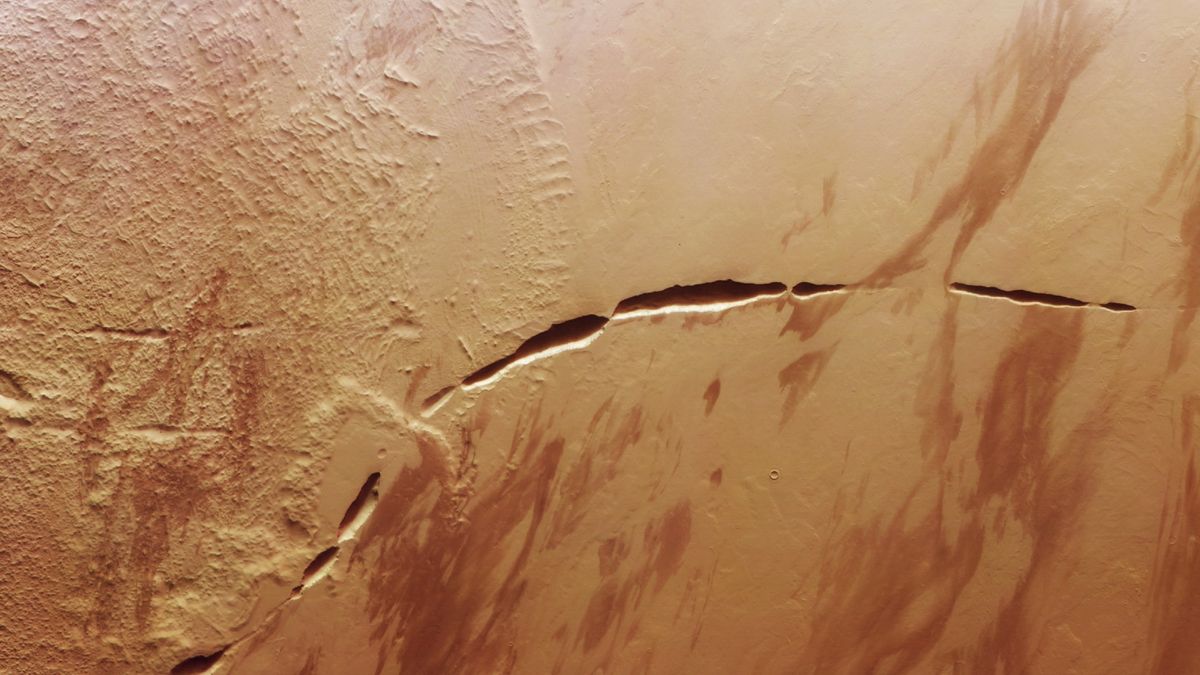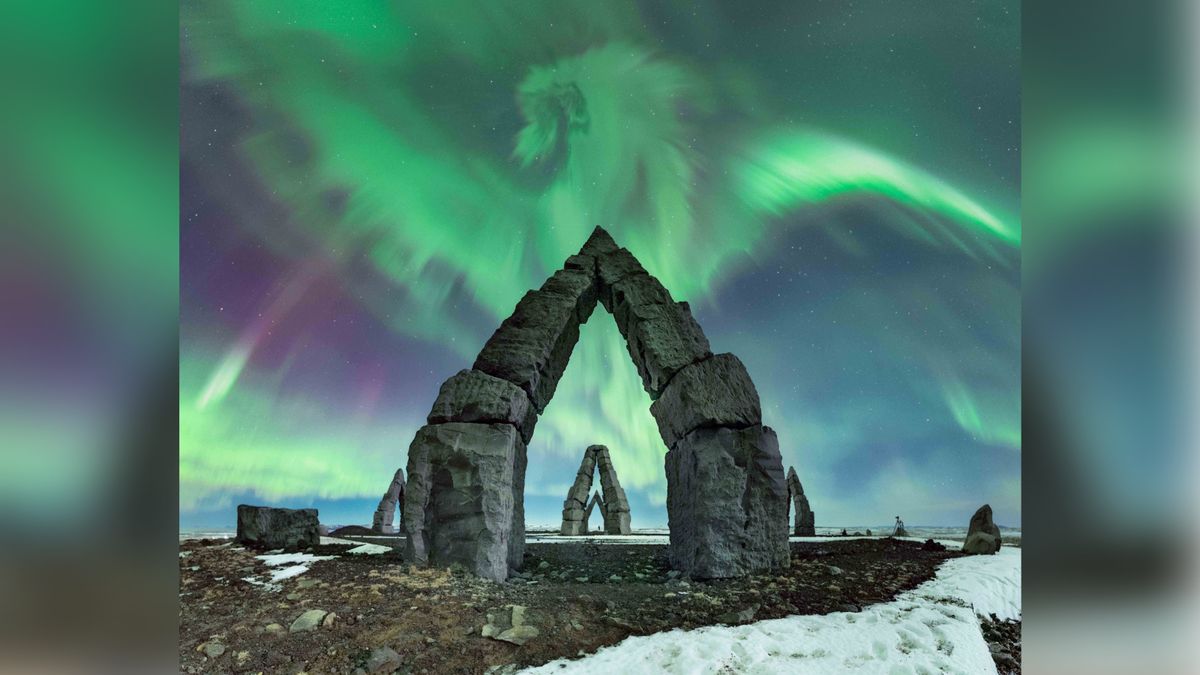Archaeologists have unearthed what may be Europe’s largest prehistoric burial mound ahead of excavations beside a highway in the Czech Republic.
The burial mound, known as a barrow, is roughly 620 feet (190 m) long — nearly twice the length of an American football field — about 50 feet (15 m) across at its widest point, and oriented along a northeast-to-southwest axis, according to a translated statement from the University of Hradec Králové (UHK).
The archaeologists think it dates from the fourth millennium B.C., which would make it one of the earliest funeral monuments ever found in Europe.
The date corresponds with the Funnel-Beaker people who lived in the area between 3800 and 3350 B.C. They are named after the distinctive pottery vessels given as grave goods in many of their burials.
The barrow “represents the longest prehistoric mound not only in our region, but probably in the whole of Europe,” Petr Krištuf, an archaeologist at the UHK, said in the statement.
Related: ‘Jackpot’ of 2,000 early-medieval coins discovered by hiker in Czech Republic
In addition to the two central burials in the barrow, which were probably those of high-status members of the prehistoric community that built it, about 30 graves thought to date from around the same time have been located nearby, according to a translated Facebook post from the department.
Highway discovery
The barrow was found during archaeological excavations beside a highway route between the city of Hradec Králové and the village of Sadová, about 55 miles (88 kilometers) east of Prague.
The burial mound was no longer visible on the surface because it was located in a heavily farmed area that had been leveled at some point, according to the Facebook post.
As a result, the archaeologists first found buried evidence of the trench that surrounded the burial mound. Similar trenches around other barrows in the area contained postholes from a wooden palisade, but such evidence has not been found at this location, the Facebook post said.
Both of the barrow’s two central burials feature skeletons of lone individuals lying on their left sides with their heads facing north.

One of the people was buried in a pit with gutters on each side and postholes at the corners, according to the Facebook post, which implies that they may have originally been placed inside a wooden structure within the barrow that has since rotted away. That person was buried with a pottery vessel that had presumably been offered as a grave good, and the second central burial also contained five worked pieces of flint, including an arrowhead and a sharp blade.
Prehistoric burials
The researchers are still analyzing the site. Traces of four later graves were discovered within the barrow itself, and the archaeologists hope to find out whether the people buried there were related to the high-status people in the central graves.
“Similar burial mounds in Central Europe usually consist of only one, maximum two, burials,” Krištuf said. “From this point of view, it will be interesting to see how the discovered graves are related to each other and whether they represent the burials of relatives.”
The archaeologists think the barrow was initially built at the site and that the other burials were made there over later generations.
“The first results show that the monumental burial mound stood here for many centuries and funeral and ritual activities of the local people took place in its vicinity,” Krištuf said. “It was an important ritual place and landmark in the landscape at that time.”
















